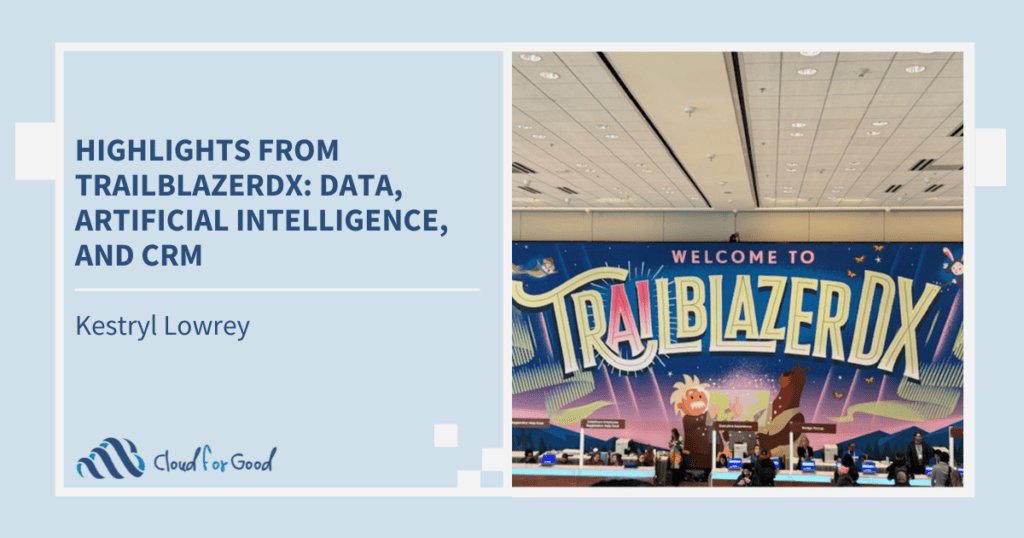Last week was Dreamforce, Salesforce’s annual customer conference, which basically takes over the city of San Francisco for a week of keynotes, educational sessions and parties. One of the highlights of this year’s conference was a focus on women in the technology industry, capping a major effort within Salesforce itself to recognize the company can do better to ensure more parity between the genders in terms of pay, promotion and overall job satisfaction. Similar efforts are underway in different parts of the technology sector, and within the Salesforce ecosystem as well (the Girly-Geeks, now known as Women in Tech, and Girl Force being two good examples of the latter).
These efforts are definitely praiseworthy and in need of all of our support. There is another area of diversity, however, that also needs focus from all of us, on a global basis, and that is racial diversity. Based on an unscientific observation of Dreamforce, most attendees are White, with a higher proportion of Asians (including South-Asians) in the Developer Zone. Black and Hispanic individuals appear to be under-represented, particularly when looking at keynote and session speakers.
This lack of representation isn’t new, and affects women as well. As a New York Times Editorial from December 2013 indicates, “Women make up nearly half the workforce but have just 26 percent of science, technology, engineering or math jobs, according to the Census Bureau. Black people make up 11 percent of the workforce but just 6 percent of such jobs and Hispanics make up nearly 15 percent of the workforce but hold 7 percent of those positions.” Additionally, the numbers haven’t improved much over time – for women, the percentage has actually declined, as the number of women studying computer science has decreased in the last two decades.
It’s critical to recognize that the technology field requires a high degree of specialized knowledge and (ideally) experience. While CIOs can come from the business side of an organization (often from within operations or finance), they have to know what they’re talking about in order to be credible, which requires experience and training. That’s why getting people involved while they are young is so critical – so they can develop a passion for the subject area as well as to understand the landscape of business into which they’ll eventually be entering. They need to study math, science, technology and engineering, and they need to develop critical thinking, analytic and leadership skills that will equip them for the 21st century workplace.
Unfortunately, as the Times editorial referenced above points out, there are structural issues hindering minorities (at least in the US) from advancing – lack of role models, insufficient resources, and a creaky and under-resourced educational system that isn’t focused on developing 21st century skills. Additionally, there is a growing opportunity gap as middle and upper-class parents are able to provide greater enrichment opportunities for their children (e.g. tutors, home technology resources, out-of-school classes), which leads to a wider gap in achievement and closes off opportunity for those who don’t have access to those benefits (e.g. internships or paid summer jobs and college access). While there are public and charter schools along with education reform nonprofits that are working to break down these barriers and close the opportunity gap, the corporate sector needs to step up its efforts, if not for reasons of equity then at least for those of competitiveness. Corporations (and nations) increasingly depend on technology, and without a ready supply of workers who can build, run and manage that technology, they will fall behind.
At Dreamforce this year, there were welcome efforts on the part of Salesforce to recognize these issues and provide content, visibility and networking opportunities around them. These efforts included:
- Networking meetups for Women, Black, Hispanic and LGBTQ people in technology.
- Luminary speakers discussing developing a diverse technology workforce as well as using technology in the workplace to foster inclusion and diversity (see the list of speakers here).
- Coding sessions and tours for students from organizations including Black Girls Code, Girls Who Code, Coder Dojo and Code.org.
Beyond the Developer Zone, there was the Women in Technology track at Dreamforce, featuring multiple sessions, including the now-infamous keynote that clearly went off track. To summarize, Salesforce put a panel composed of YouTube CEO Susan Wojcicki and The Honest Company CEO (and actress) Jessica Alba on stage with Gayle King of CBS This Morning as moderator. The panel has been derided both by attendees and some in the media as being just another ‘dog and pony show’ that addressed the same old questions (e.g. ‘how do you do it all’) in the same manner, rather than really addressing the issues facing women in technology and was patronizing and insulting to women.
To say that Salesforce insulted women with this session, however, is to throw the baby out with the bathwater. Could it have been done differently, most definitely. As my colleague, Jessica Boucher commented on Facebook:
“Getting women interested in technology is still necessary, but those who were born into this dialogue are bored and crave a master track where we’re asked meaty questions, are able to show off things we’ve created, and treated as equals. Let’s get to it already.”
Knowing Salesforce, they’ve listened to their customers, taken the criticism on board, and we’ll see a different approach next year. Interestingly, a similar panel at TechCrunch Disrupt earlier this week seems to have been better received. Perhaps there are lessons that Salesforce can learn from this session.
In spite of this (high-profile) lapse, let’s recognize the positive steps taken at Dreamforce and commit to doing our part as corporate as well as individual citizens to help break down the structural barriers to diversity in our daily lives.
Don’t know what to do? Here are some suggestions:
- Examine your hiring and recruitment practices for ways to eliminate bias and seek out diverse candidates
- Look at your promotion and pay practices – are you committed to equal pay for equal work?
- Review your parental leave, PTO and remote working policies – are you providing a family-friendly environment? Are you accommodating the needs of parents in order to retain top talent?
- Provide Volunteer time off (VTO) so employees can work with nonprofits.
- User your VTO time to volunteer with an organization. Some examples include: Black Girls Code, Girls Who Code, Coder Dojo, Citizen Schools, and Spark Afterschool Academy.
At Cloud for Good, we’re not perfect, but we strongly believe you can do well by doing good. And by strengthening our community, we make the world a better place. We’re taking some steps to strengthen our own commitment in this area, including looking to widen our recruitment pools by reaching out to Veteran’s organizations like VetForce and actively searching for female candidates and candidates of color. We have also updated our Parental Leave policy to provide more flexibility for mothers, fathers and adoptive parents. Finally, we’ve joined the Pledge 1% Initiative and committed to donating profit, product and time towards non-profit organizations, including up to 3 days per year of paid volunteer time off (VTO) for employees to use working with 501(c)3 organizations.
As Marc Benioff said, “The business of business is improving the state of the world.” We’ve got a long way to go, and Dreamforce this year showed us some of both the right and wrong ways to go about it.





